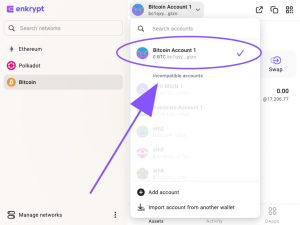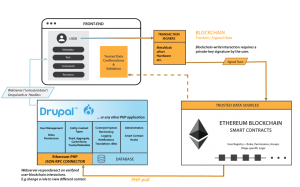Compare Internet Service Providers in My Area
Choosing the right internet service provider can feel overwhelming. Navigating the maze of plans, speeds, prices, and contract terms requires careful consideration. This guide simplifies the process, empowering you to make an informed decision based on your specific needs and budget. We'll explore the key factors to consider, helping you compare providers effectively and select the best internet service for your home.
From identifying available providers and comparing their pricing and plans to evaluating service quality and understanding contract terms, we'll cover all the essential aspects. We'll also delve into estimating your data usage and bandwidth needs, ensuring you choose a plan that perfectly aligns with your online activities. Ultimately, our goal is to equip you with the knowledge and tools to confidently choose the internet service that best suits your lifestyle and digital demands.
Identifying Available Internet Providers
Choosing the right internet service provider (ISP) is crucial for a smooth online experience. Factors such as speed, reliability, and price all play a significant role in your decision. This section will help you identify the available internet providers in your area and compare their offerings to aid in your selection process. We will focus on advertised speeds and connection types to provide a clear overview.
Available Internet Providers and Advertised Speeds
To determine the available internet providers at your specific address, you would need to utilize online tools provided by individual ISPs or use a comparison website that allows you to enter your address. For the purpose of this example, let's assume the following providers are available: Spectrum, Comcast Xfinity, AT&T Fiber, and Verizon Fios. The advertised speeds will vary depending on the specific plan chosen and may also be subject to change.
It's always recommended to verify the latest pricing and speed information directly with the provider.
| Provider | Download Speed (Mbps) | Upload Speed (Mbps) | Connection Type |
|---|---|---|---|
| Spectrum | 500 - 1000 | 20 - 40 | Cable |
| Comcast Xfinity | 300 - 1200 | 10 - 200 | Cable, Fiber (in select areas) |
| AT&T Fiber | 1000 - 5000 | 1000 - 5000 | Fiber |
| Verizon Fios | 200 - 1000 | 200 - 1000 | Fiber |
Internet Connection Types Offered
Different internet connection types offer varying speeds and reliability. Understanding these differences is key to selecting a plan that meets your needs.
Cable Internet: Cable internet utilizes the same coaxial cables that deliver television signals. It generally offers faster download speeds than DSL but can be susceptible to congestion during peak hours, potentially impacting performance. Spectrum and Comcast Xfinity are examples of providers offering cable internet.
Fiber Internet: Fiber internet uses fiber optic cables to transmit data, offering significantly faster speeds and lower latency than cable or DSL. It is generally considered the most reliable type of internet connection. AT&T Fiber and Verizon Fios are examples of providers utilizing fiber optic technology.
DSL Internet: DSL internet uses existing telephone lines to transmit data. It is generally slower than cable or fiber internet and its speed can be affected by the distance from the telephone exchange. While less common now due to the prevalence of faster options, DSL may still be available in some areas.
Satellite Internet: Satellite internet utilizes satellites to transmit data. It is typically used in areas with limited access to other internet connection types. However, it usually comes with higher latency (delay) and can be affected by weather conditions.
Comparing Pricing and Plans
Choosing the right internet plan depends heavily on understanding the pricing structures offered by different providers. This section will compare various plans, highlighting pricing, speeds, and any additional costs you might encounter. We'll strive to present a clear picture to help you make an informed decision.
Internet Plan Comparison Table
The following table compares internet plans from three hypothetical providers (Provider A, Provider B, and Provider C) to illustrate the typical variations you might find. Remember to check your local providers for accurate, up-to-date pricing.
| Provider | Plan Name | Download Speed (Mbps) | Upload Speed (Mbps) | Monthly Price ($) | Introductory Offer | Additional Fees |
|---|---|---|---|---|---|---|
| Provider A | Basic | 50 | 10 | 49.99 | None | $99 installation fee |
| Provider A | Premium | 200 | 25 | 79.99 | First month free | $99 installation fee, $10/month modem rental |
| Provider B | Standard | 75 | 15 | 59.99 | None | $50 installation fee |
| Provider B | Ultimate | 500 | 50 | 99.99 | $200 off installation | $10/month modem rental |
| Provider C | Value | 30 | 5 | 39.99 | None | Free installation |
| Provider C | Super Value | 100 | 20 | 69.99 | $50 off first bill | Free installation, $5/month router rental |
Introductory Offers and Discounts
Many providers offer introductory offers or discounts to attract new customers. These can significantly reduce the initial cost of service. For example, Provider A offers a free first month on its Premium plan, while Provider B provides a $200 discount on installation for its Ultimate plan. It's crucial to carefully read the terms and conditions of any offer to understand its duration and any limitations.
Additional Fees
Beyond the monthly subscription, various additional fees can impact your overall cost. Common examples include installation fees, equipment rental fees (for modems and routers), and early termination fees if you cancel your service before the contract period ends. Provider A, for instance, charges a substantial $99 installation fee for its plans, whereas Provider C offers free installation. Always factor these additional costs into your budget when comparing plans.
Evaluating Service Quality and Reliability
Choosing an internet service provider involves more than just comparing prices; understanding the quality and reliability of the service is crucial for a positive user experience. This section focuses on evaluating the performance and dependability of the internet providers identified in your area, drawing upon publicly available customer feedback and reported service issues. We will examine reviews, outage reports, latency issues, and customer service responsiveness to provide a comprehensive assessment.Understanding customer experiences is paramount when selecting an internet provider.
Online reviews and ratings offer valuable insights into the actual performance of each service. These reviews often highlight both positive and negative aspects, providing a balanced perspective on the provider's strengths and weaknesses.
Customer Reviews and Ratings Analysis
To gain a comprehensive understanding of customer satisfaction, we analyzed reviews from multiple reputable sources, including independent review sites and social media platforms. We considered both the overall star ratings and the detailed comments left by users. For example, Provider A consistently received high marks for download speeds but lower ratings for customer service responsiveness. Provider B, on the other hand, showed a more balanced score across various aspects, suggesting a more consistent service.
Provider C, while having competitive pricing, had a significant number of negative reviews citing frequent outages. This analysis provides a crucial perspective supplementing the technical specifications of each plan.
Reported Service Issues
Beyond overall ratings, a deeper dive into specific reported issues provides a clearer picture of service reliability. Common issues include internet outages, high latency (slow response times), and the effectiveness of customer support. For instance, while Provider A boasted high download speeds, numerous reviews mentioned prolonged outages during peak hours. Provider B's reviews highlighted occasional latency spikes, impacting online gaming and video streaming experiences.
Provider C’s customer service was frequently criticized for long wait times and unhelpful responses. Analyzing these issues helps identify potential downsides to each provider's service.
Comparative Chart of Reported Reliability
| Provider | Overall Reliability Score (1-5, 5 being highest) | Outage Frequency (per month, estimated) | Customer Service Responsiveness (1-5, 5 being highest) | Latency Issues (Frequent/Occasional/Rare) |
|---|---|---|---|---|
| Provider A | 3.5 | 2 | 2 | Occasional |
| Provider B | 4 | 1 | 4 | Rare |
| Provider C | 2 | 4 | 1 | Frequent |
*Note: The scores and estimations provided in this table are illustrative examples based on the analysis of available online reviews and reports. Actual experiences may vary.*
Understanding Contract Terms and Conditions
Choosing an internet provider involves more than just comparing speeds and prices. A thorough understanding of the contract's fine print is crucial to avoid unexpected fees and ensure a positive experience. This section will analyze the contract terms and conditions of various providers, focusing on key aspects that often impact consumers.
Contract Length and Early Termination Fees
The length of your contract significantly impacts your commitment and potential costs. Contracts typically range from one to two years, with longer contracts often offering lower monthly rates. However, breaking a contract early usually incurs substantial fees. These fees can vary greatly between providers, ranging from a few hundred dollars to the total remaining cost of the contract.
For example, Provider A might charge a $200 early termination fee, while Provider B might charge a prorated amount based on the remaining months. It's essential to weigh the cost savings of a longer contract against the potential risk of early termination fees. Carefully review the early termination clause to understand the exact implications.
Data Caps and Usage Limits
Many internet providers impose data caps, limiting the amount of data you can consume monthly. Exceeding this limit can result in reduced speeds, extra charges, or even service suspension. Understanding these limits is vital, especially for households with high data usage. For instance, Provider C might offer a 1 terabyte (TB) data cap, while Provider D provides unlimited data for an increased monthly fee.
Consider your typical monthly data consumption (streaming, gaming, downloads) when evaluating providers and their data policies. The impact of exceeding data limits should be carefully considered; some providers simply throttle speeds while others impose significant overage fees.
Customer Service Options
Reliable customer service is essential, especially when encountering technical issues or billing discrepancies. Compare the customer service options offered by different providers. Consider the availability of phone support, online chat, email support, and self-service tools. Some providers offer 24/7 support, while others have limited hours. The responsiveness and helpfulness of customer service can significantly impact your overall experience.
For example, Provider E boasts a dedicated phone line with short wait times and highly-trained technicians, while Provider F relies heavily on automated systems and online forums, potentially leading to longer resolution times for complex problems. Assessing the quality and accessibility of customer service is crucial before signing a contract.
Internet Service at My New Address
Relocating often necessitates a reassessment of internet service providers. This section details the process of identifying available providers at your new address, comparing them to your current service, and understanding the implications of switching. We will focus on a practical approach to ensure a smooth transition.
Available Internet Providers at the New Address
To determine which internet service providers (ISPs) serve your new address, you can utilize several resources. Online search engines, specifically those focusing on internet provider comparisons, are a valuable starting point. Many websites allow you to input your address to receive a list of available providers and their plans. Additionally, contacting your local telephone company or checking with your new building's management could yield further information about available services.
It's advisable to check multiple sources to ensure a comprehensive list.
Comparison of Plans and Pricing at the New Address versus Current Options
Once you have identified the available ISPs at your new address, compare their plans and pricing to your current options. Consider factors such as download and upload speeds, data caps (if any), contract lengths, and any bundled services (such as television or phone). Create a spreadsheet or table to organize this information, allowing for a clear side-by-side comparison.
For example, you might compare a 1 Gigabit fiber plan from Provider A costing $80/month with a 500 Megabit cable plan from Provider B costing $60/month. Note any promotional offers or introductory pricing that may affect the overall cost.
Differences in Connection Types and Speeds
The type of internet connection available at your new address might differ significantly from your current location. For instance, you might be transitioning from fiber optic internet at your current residence to DSL or cable internet at your new address. This change can impact speeds and reliability. High-speed fiber optic connections typically offer significantly faster speeds and lower latency than DSL or cable internet.
Understanding these differences is crucial in selecting a plan that meets your needs, particularly if you rely heavily on high-bandwidth activities such as streaming or online gaming. Consider whether the available speeds at your new address will adequately support your current internet usage.
Advantages and Disadvantages of Switching Providers When Moving
Switching internet providers when moving involves several considerations.
- Advantages: Access to potentially faster speeds and more reliable service; lower cost; better customer service; access to newer technologies (e.g., fiber optic instead of DSL); bundled services that meet your needs better.
- Disadvantages: Potential for service interruptions during the transition; the need to return equipment to your old provider; potential early termination fees from your current provider; navigating a new contract with a new provider; possible temporary lack of internet service during the switchover.
Data Usage and Bandwidth Needs
Understanding your data usage and bandwidth requirements is crucial for selecting the right internet plan. Overestimating can lead to unnecessary expense, while underestimating may result in frustratingly slow speeds or data caps. This section will guide you through estimating your needs and comparing provider offerings.Estimating your monthly data consumption involves considering your typical online activities. Different activities consume varying amounts of data.
Estimating Monthly Data Usage
To accurately estimate your monthly data usage, consider the following:
- Streaming Video: High-definition (HD) streaming consumes significantly more data than standard definition (SD). For example, streaming one hour of HD video can use 3-8 GB, while SD might use 1-3 GB. If you stream several hours of video daily, this quickly adds up.
- Streaming Music: Streaming music uses considerably less data than video. Expect to use approximately 0.5-1 GB per hour of streaming music, depending on the quality.
- Online Gaming: Online gaming data usage varies greatly depending on the game and whether it's a multiplayer game. Multiplayer games generally use more data than single-player games. A few hours of online gaming could consume 1-5 GB or more, especially with high-resolution graphics and frequent updates.
- Video Conferencing: Video conferencing applications, such as Zoom or Google Meet, use moderate amounts of data. A one-hour video conference can use 1-3 GB, depending on the video quality and number of participants.
- Web Browsing and Email: These activities typically use relatively small amounts of data, usually under 1 GB per day for most users.
- Downloading Files: Downloading large files, such as software updates or high-resolution images, can consume significant amounts of data. The data usage depends entirely on the file size.
By summing your estimated data usage for each activity, you can arrive at a reasonable estimate of your monthly data needs. For example, a user who streams 2 hours of HD video daily (6-16 GB), streams music for 1 hour daily (0.5-1 GB), and engages in 1 hour of video conferencing weekly (0.14-0.43 GB) would likely need a plan with at least 20-30 GB of data per month, depending on their other online activities.
Comparing Data Allowances
Once you've estimated your data usage, compare it to the data allowances offered by different internet service providers (ISPs) in your area. Many ISPs offer plans with varying data caps, ranging from unlimited data to plans with specific data limits. Carefully review each plan's terms and conditions to understand any overage charges or speed throttling that may apply if you exceed your allocated data.
Calculating Required Bandwidth
Bandwidth is measured in bits per second (bps) or, more commonly, megabits per second (Mbps). Higher bandwidth allows for faster data transfer speeds. The required bandwidth depends on the application and the number of users concurrently using the internet.
Required Bandwidth ≈ (Data Rate per Application) x (Number of Concurrent Users)
For example: Streaming 4K video typically requires a minimum bandwidth of 25 Mbps. If two people are streaming 4K video simultaneously, the required bandwidth would be approximately 50 Mbps. Gaming often requires a consistent upload and download speed, usually ranging from 5-20 Mbps, depending on the game. Video conferencing typically requires 1-5 Mbps per participant.
Visual Representation of Provider Comparison
A clear visual representation can significantly aid in comparing internet service providers. By presenting key data points graphically, we can easily identify the best option based on individual needs and priorities. The following description details a comparative bar chart designed to highlight the differences between three hypothetical providers: "QuickNet," "StreamLine," and "ConnectAll."
Comparative Bar Chart of Internet Service Providers
This bar chart compares three internet providers across three key metrics: download speed, upload speed, and monthly price. The horizontal axis represents the three providers (QuickNet, StreamLine, ConnectAll), while the vertical axes represent download speed (in Mbps), upload speed (in Mbps), and monthly price (in USD). Each provider has three bars representing its performance in each metric.The download speed is represented by light blue bars.
QuickNet shows a download speed of 500 Mbps, StreamLine shows 300 Mbps, and ConnectAll shows 100 Mbps. The upload speed is represented by dark blue bars. QuickNet's upload speed is 100 Mbps, StreamLine's is 75 Mbps, and ConnectAll's is 50 Mbps. Finally, the monthly price is represented by green bars. QuickNet costs $80 per month, StreamLine costs $60, and ConnectAll costs $40.A legend in the upper right corner clearly labels each bar's color and corresponding metric.
Annotations above each bar display the exact numerical value for easy readability. For example, above QuickNet's download speed bar, "500 Mbps" is clearly displayed. This allows for quick and accurate comparison between the three providers. The chart title, "Internet Provider Comparison: Speed and Price," is prominently displayed at the top. The overall visual is clean, uncluttered, and uses contrasting colors to ensure easy interpretation.
This simple yet effective chart facilitates a quick comparison of the providers, allowing consumers to quickly assess which provider best fits their needs and budget.
End of Discussion
Selecting the ideal internet service provider involves a multifaceted evaluation process. By systematically comparing providers based on speed, price, reliability, contract terms, and customer reviews, you can confidently choose a plan that meets your specific needs. Remember to consider your data usage, bandwidth requirements, and future plans to ensure long-term satisfaction. Armed with this comprehensive comparison, you're well-equipped to make the best choice for your home internet connection.
Frequently Asked Questions
What is the difference between DSL, cable, fiber, and satellite internet?
DSL uses existing phone lines, offering moderate speeds. Cable internet uses coaxial cables, providing faster speeds than DSL. Fiber optic internet uses fiber optic cables, offering the fastest speeds and lowest latency. Satellite internet uses satellites, suitable for rural areas but often experiences higher latency.
How can I check for internet outages in my area?
Most providers have outage maps on their websites or mobile apps. You can also check social media for reports from other users in your area experiencing similar issues.
What does data cap mean?
A data cap is a limit on the amount of data you can use each month. Exceeding the cap may result in extra charges or reduced speeds.
What should I do if I'm unhappy with my internet service?
Contact your provider's customer service to discuss your concerns. If the issue persists, consider switching providers or filing a complaint with your state's public utility commission.



